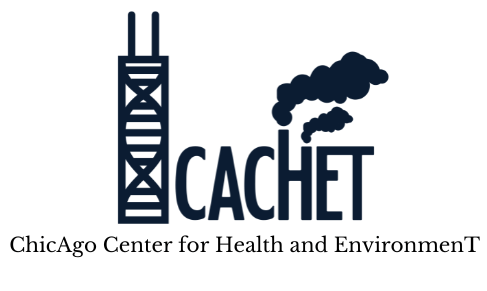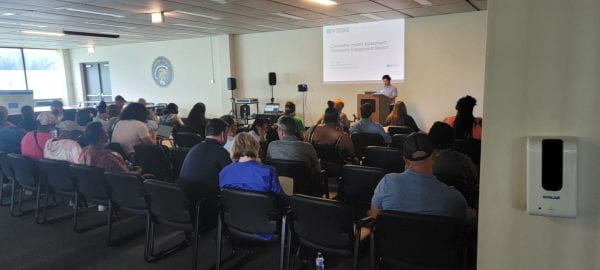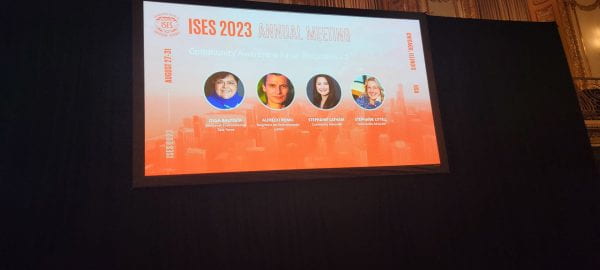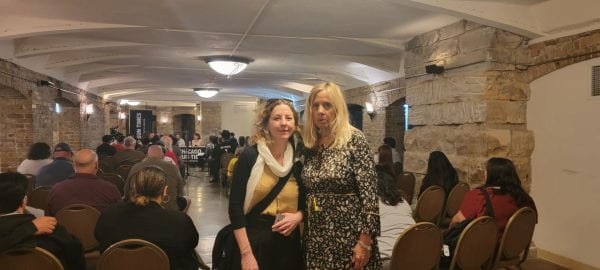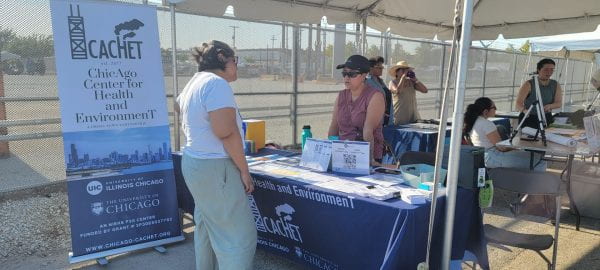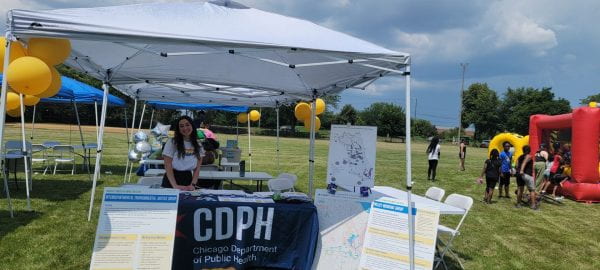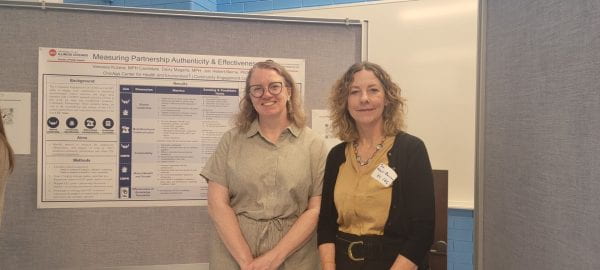Community Engagement Core
(CEC)
Enviro Report
Story Corps
Our Students
Local News
About Our Community Engagement Core
Jeni Hebert-Beirne, PhD, MPH – Co-Lead
Brisa Aschebrook-Kilfoy, PhD, MPH, MPhil – Co-Lead
The CACHET Community Engagement Core (CEC) plays a key role in CACHET’s mission by engaging with underserved, overburdened, and disadvantaged communities throughout Chicago to identify and address environmental hazards of concern. The goal of the CEC is to engage local Chicago communities (community residents and key stakeholders) in neighborhoods with known and potential environmental sources, pollutants, exposures, or health risk in an iterative process to identify priority environmental hazards of concern within their neighborhoods and align these concerns with CACHET research activities. The long-term goal of the CEC is to build transdisciplinary research teams that directly address emerging community concerns, translate findings into actions, and disseminate research results to the community, healthcare providers, regulators, and policymakers to improve environmental health-related outcomes.

The specific aims of the CEC are to:
- Enhance the composition and mechanisms of engagement of community stakeholders including the Stakeholder Advisory Board (SAB) and Community Advisory Board (CAB) and adding Community Scholars as CEC co-investigators.
- Create and expand mechanisms that allow for community identification and reporting of issues, such as the CEC-developed EnviroReport app.
- Facilitate strategic, bidirectional communication across engagement mechanisms between community partners and CACHET scientists, permitting rapid identification of concerns to inform research and the translation of research findings to inform practice and policy.
- Enhance the CEC knowledge translation infrastructure by investing in diverse and novel dissemination strategies for CACHET research findings.
Engagement at the neighborhood level in Chicago is particularly important given the known relationship between environmental hazard exposure and race/ethnicity, and the history of racial/ethnic segregation throughout Chicago. Our interest here in race draws not from socially-constructed categories of race/ethnicity as a risk factor for disease, but rather, from the impacts of racism as the mechanism by which racial categorizations have biological and behavioral consequences—that race is assigned meaning, which explains historical processes that have resulted in racially segregated social and environmental contexts.
Chicago is the third most populous city in the United States with one of the most diverse populations, including an estimated 33.3% Non-Hispanic White, 29.2% Non-Hispanic Black, 28.8% Hispanic, and 5.6% Asian. Chicago is also one of the most segregated cities in the United States, with Black, Indigenous, and people of color (BIPOC) populations localized to the South and West sides of the city, which are communities with the highest vulnerability index—a measure that integrates environmental, social, economic, and political exposure to harmful distressors (Fig. 1). In addition to high social and economic hardship, these communities have well-documented higher levels of exposures to environmental pollutants such as lead, other metals, indoor pollutants, and air and water pollution. Unsurprisingly, community residents also experience higher rates of common diseases primarily driven by environmental exposures such as asthma, COPD, diabetes, cardiovascular disease, and lung cancer.
Identification of the environmental hazards of concern that may drive these health injustices, as well as development of research, advocacy, and implementation strategies to address these matters, involves building and maintaining collaborations with local community groups that are best positioned to know these hazards through lived experiences. To accomplish this, the CEC continues to build on established relationships and partnerships with community organizations, residents, and stakeholders to guide the CEC’s work. Currently, the CEC is working with community organizations in Southeast (SE) Chicago (community areas of Hegewisch, East Side, South Deering, and South Chicago; neighborhoods of Bush and Jeffrey Manor), which is historically one of the largest steel manufacturing areas of the world; and other EJ organizations serving Chicago. These areas are two of the most polluted areas in the country from industry and transportation, both with strong histories of community organizing and advocacy. However, the CEC seeks to expand to other community areas and neighborhoods that face various environmental challenges, social and economic hardship, and racially/ethnically mixed populations.
Current Environmental Issue In Chicago
EJ Issues on the west side of Chicago
EJ Issues on the South & East side of Chicago
Climate Justice Partnership
Exposure to Metals Fact Sheets
| Hojas informativas sobre exposición a metales
